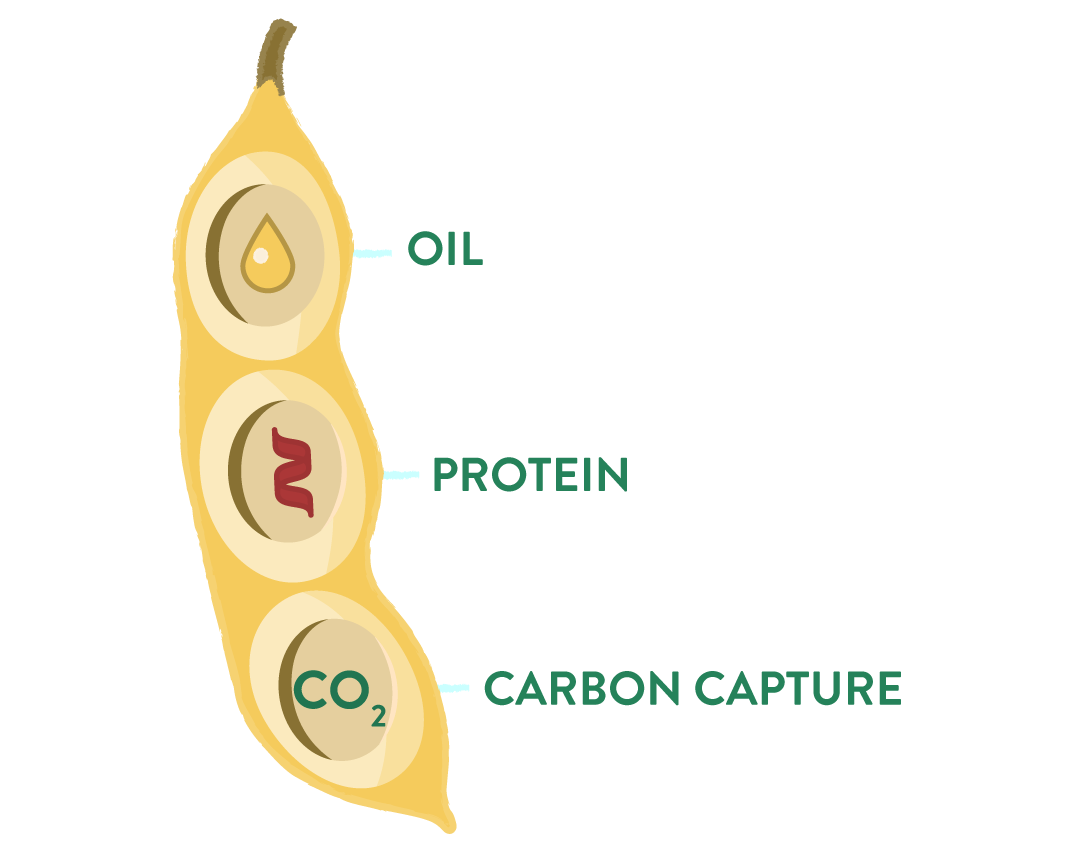Photoseed soy
A better bean for everyone
Used for food, feed and fuel, soybeans are one of the planet’s most important agricultural crops with skyrocketing demand. However, misaligned incentives across the value chain limit the crop’s ability to meet future challenges.
As innovation has prioritised “field yields”, soy protein levels have consistently declined over the past decade. With increased demand for both oil and protein, additional production often comes at the cost of a larger environmental footprint.
PhotoSeed soy is a better bean that maintains modern field yields and improves oil by up to 15% and protein by up to 3 points in the meal with fewer inputs on a smaller environmental footprint.

Tap or click the boxes to reveal the solution
Challenge: Food vs Fuels
Demand from renewable energy drives up food costs with not enough sustainable feedstock
PhotoSeed Soy: Higher Oil with Lower Carbon Intensity
PhotoSeed soybeans have up to 15% more oil than commodity beans; providing feedstock security while improving processing margins
Challenge: Deteriorating Soy Meal Quality
Industry protein standards for soybean meal dropped from 48% to 46%, driving up cost and lowering sustainability of feed
PhotoSeed Soy: Higher Protein Meal
Reversed a decade of quality decline by increasing protein by up to 3 points and lowering carbohydrates
Challenge: Worsening Sustainability of Soy
Insatiable demand for soy means new acreage comes at the expense of forest and pasture lands
PhotoSeed Soy: Improved Sustainability
Fueled by increased carbon capture, nutritionally enhanced PhotoSeed soy reduces land use requirements, improves feed conversion, and lowers overall carbon intensity scores
Challenge: Fragmented Value Chain
Volume-driven business with disparate incentives results in a race to the bottom mentality
PhotoSeed Soy: Harmonized Value Chain
Harmonized value chain that aligns and improves economics for growers and partners while offering more sustainable and affordable nutrition for consumers

